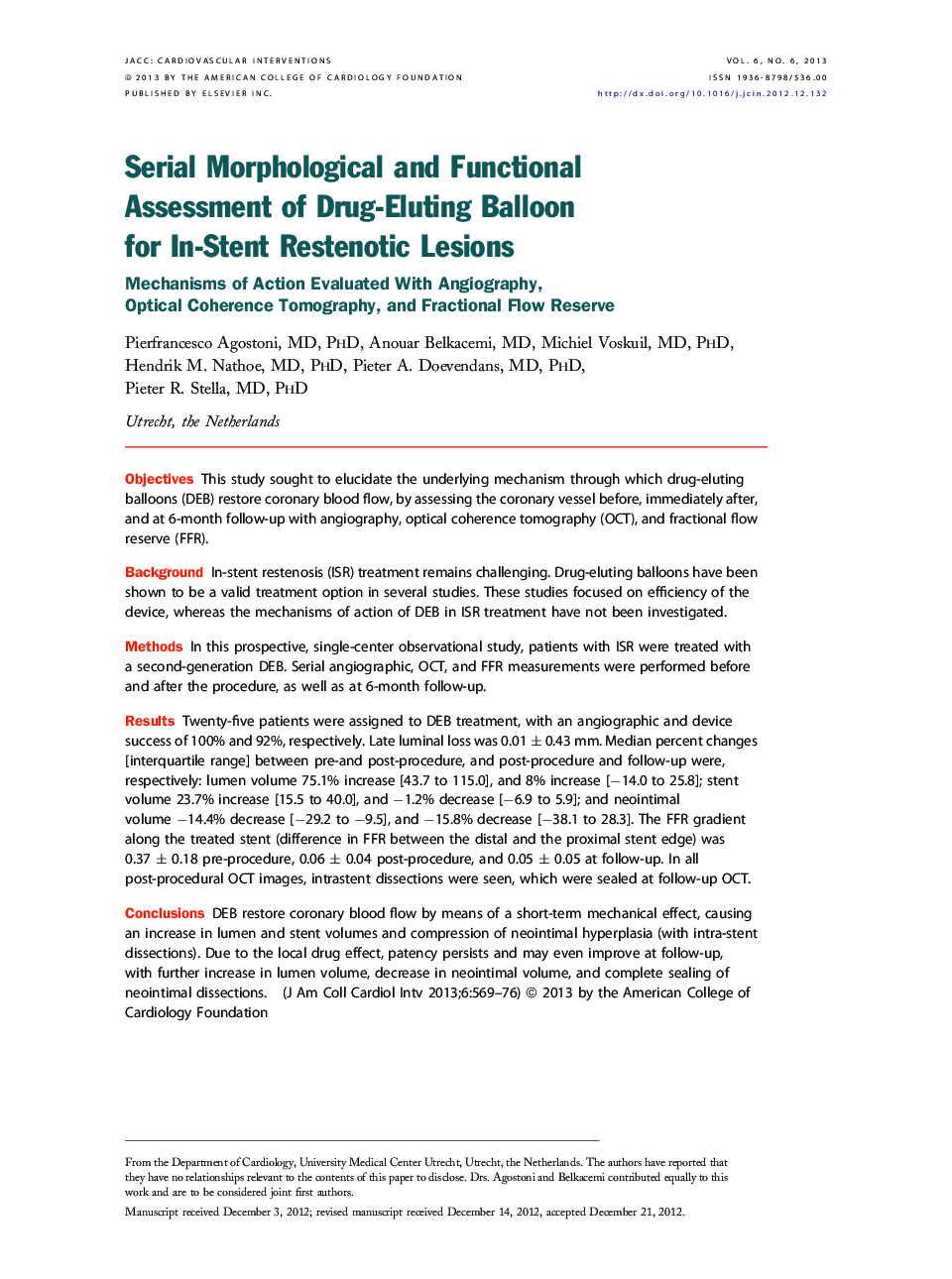| Article ID | Journal | Published Year | Pages | File Type |
|---|---|---|---|---|
| 2940852 | JACC: Cardiovascular Interventions | 2013 | 8 Pages |
ObjectivesThis study sought to elucidate the underlying mechanism through which drug-eluting balloons (DEB) restore coronary blood flow, by assessing the coronary vessel before, immediately after, and at 6-month follow-up with angiography, optical coherence tomography (OCT), and fractional flow reserve (FFR).BackgroundIn-stent restenosis (ISR) treatment remains challenging. Drug-eluting balloons have been shown to be a valid treatment option in several studies. These studies focused on efficiency of the device, whereas the mechanisms of action of DEB in ISR treatment have not been investigated.MethodsIn this prospective, single-center observational study, patients with ISR were treated with a second-generation DEB. Serial angiographic, OCT, and FFR measurements were performed before and after the procedure, as well as at 6-month follow-up.ResultsTwenty-five patients were assigned to DEB treatment, with an angiographic and device success of 100% and 92%, respectively. Late luminal loss was 0.01 ± 0.43 mm. Median percent changes [interquartile range] between pre-and post-procedure, and post-procedure and follow-up were, respectively: lumen volume 75.1% increase [43.7 to 115.0], and 8% increase [−14.0 to 25.8]; stent volume 23.7% increase [15.5 to 40.0], and −1.2% decrease [−6.9 to 5.9]; and neointimal volume −14.4% decrease [−29.2 to −9.5], and −15.8% decrease [−38.1 to 28.3]. The FFR gradient along the treated stent (difference in FFR between the distal and the proximal stent edge) was 0.37 ± 0.18 pre-procedure, 0.06 ± 0.04 post-procedure, and 0.05 ± 0.05 at follow-up. In all post-procedural OCT images, intrastent dissections were seen, which were sealed at follow-up OCT.ConclusionsDEB restore coronary blood flow by means of a short-term mechanical effect, causing an increase in lumen and stent volumes and compression of neointimal hyperplasia (with intra-stent dissections). Due to the local drug effect, patency persists and may even improve at follow-up, with further increase in lumen volume, decrease in neointimal volume, and complete sealing of neointimal dissections.
